Intel Unveils Lunar Lake Architecture: New P and E cores, Xe2-LPG Graphics, New NPU 4 Brings More AI Performance
by Gavin Bonshor on June 3, 2024 11:00 PM ESTBetter I/O: Thunderbolt 4, Thunderbolt Share, Wi-Fi 7 Included
Intel's developments in I/O and connectivity bring the current generation of connectivity to the Lunar Lake platform. Key highlights in terms of I/O, which is set for Lunar Lake, include native Thunderbolt 4 connectivity, the new Thunderbolt Share functionality, and the upgrade to Wi-Fi 7 wireless connectivity.
Thunderbolt 4 builds excellently on the foundation laid by Thunderbolt 3, which isn't new from a controller standpoint. It does offer enhancements in connectivity and bandwidth, and being internally opted for is the key difference here. Three Thunderbolt ports are now allowed for every laptop, making this feature very flexible and usable.
Thunderbolt Share is a new technology that will come with Lunar Lake. It allows multiple PCs to share screens, monitors, keyboards, mice, and storage across systems in a straightforward and fast manner at up to 60 frames per second. This is very important in collaborative environments, whereby sharing data is made easy and quick, thus improving workflow. When used in productivity tasks, the utility allows users to sync folders and has a drag-and-drop file-sharing function between PCs at high speeds.
Wi-Fi 7 is also integrated into the Lunar Lake platform, which Meteor Lake omitted regarding wireless connectivity. This multi-link operation feature of Wi-Fi 7 adds wireless signal integrity and reliability and increases throughput with less latency by duplicating packets across all links above. This implies smoother performance and better load balancing, even in demanding applications. The greatest benefit from Wi-Fi 7's new capabilities comes to the user when dealing with bandwidth-intensive tasks.
It also includes RF Interference Mitigation technology, where the DDR clock frequency is automatically tuned to minimize interference with Wi-Fi signals. This function saves 50% of throughput degradation caused by memory noise; thus, theoretically, it should uplift the performance of the entire wireless network. Another positive effect users can expect is robust connectivity, even in very demanding environments.
Intel's partnership with Meta goes further, tapping into this Wi-Fi 7 technology to enhance VR experiences. This further optimizes the video latency performance and reduces interference, thus making VR applications more seamless and engaging, at least from a wireless connectivity viewpoint. The new enhancements of Wi-Fi 7 offer high, reliable speed with low latency to meet the most challenging needs in VR applications.


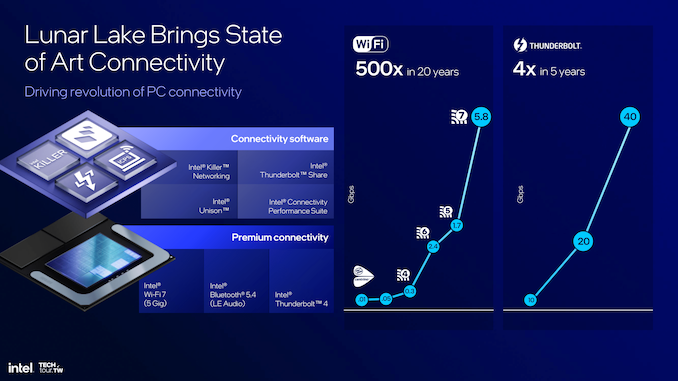
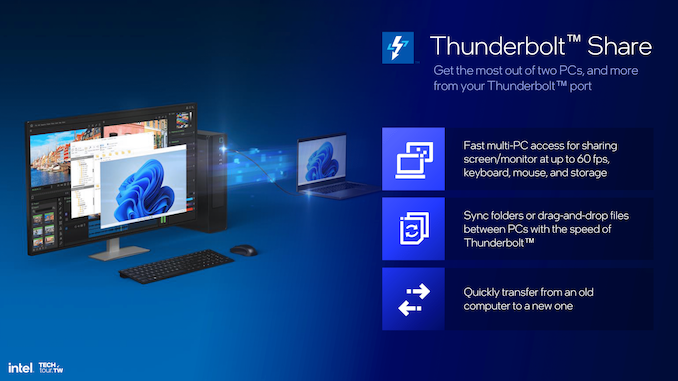
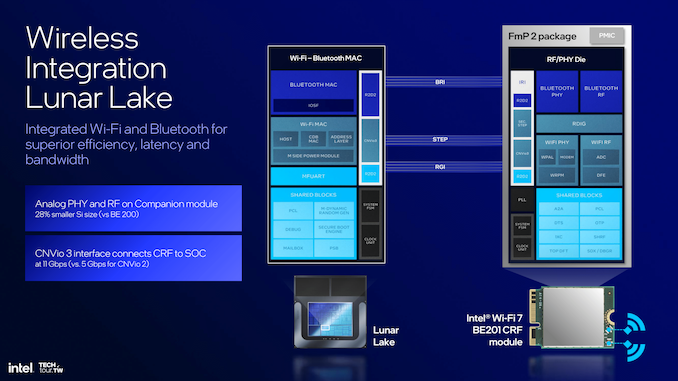
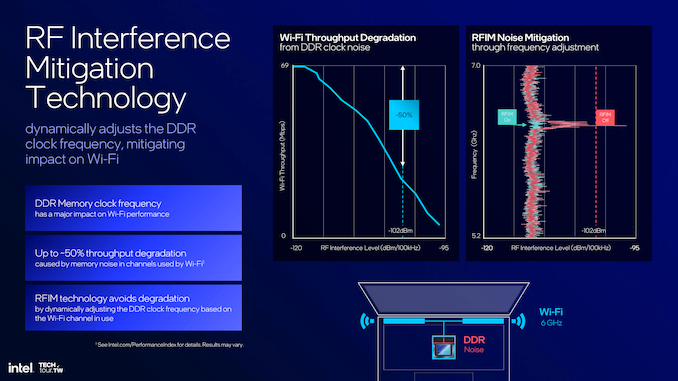
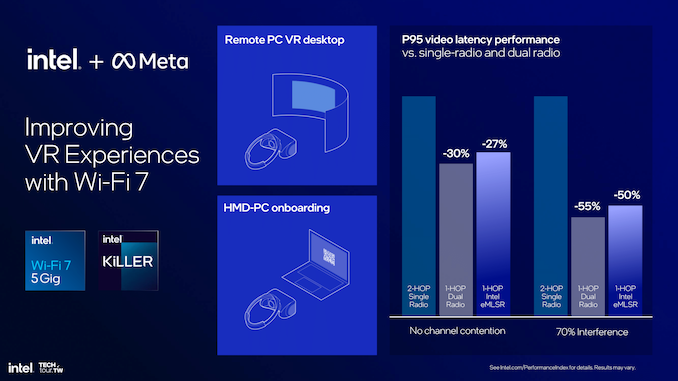








90 Comments
View All Comments
BushLin - Wednesday, June 5, 2024 - link
Seconded, also..."Gavin Bonshor - Tuesday, May 21, 2024 - link
Hey, thank you for saying that. They are coming as soon as I can get the data updated. I had to fly out to the USA last Monday evening, and the testing wasn't finished in time. I also don't typically work weekends, but I made an exception in this case. I'm catching up, but don't worry, it will be updated ASAP." Reply
TheinsanegamerN - Monday, June 10, 2024 - link
Nope. We never got that Macbook review or the return of the GPU benchmarks. Replyjaj18 - Tuesday, June 4, 2024 - link
What's the improvement from on package memory🤔? Replyrgreen1983 - Tuesday, June 4, 2024 - link
Power savings. Trading upgradeability for unplugged battery life because publications put way too much emphasis on it for years trying to make arm seem better than x86. ReplyThe Hardcard - Wednesday, June 5, 2024 - link
There’s not way to emphasis on it. Battery life is a far more mainstream issue than upgradability. Replyrgreen1983 - Wednesday, June 5, 2024 - link
I disagree. Battery life beyond a certain point is silly in a laptop, they aren't phones or tablets, which are much better suited for unplugged use for media consumption. Who the heck is spending 20 hours unplugged browsing the web? And at power performance than they would have if they were plugged in. I have supported thousands of laptops, lots of them macs, and any that do real work are plugged in.Battery life used to be measured in minutes and was a big deal but now that we are measuring near days it's getting silly. Reply
The Hardcard - Thursday, June 6, 2024 - link
People work plugged in because they have to, not because they want to. as more powerful workload, capable all day and multi day, devices become available, they will be the choices for huge numbers of people who can afford the price.Once all the players jump in, and there is more competition in price, extended battery life devices that can be worked on will dominate. Reply
TheinsanegamerN - Monday, June 10, 2024 - link
Maybe you want a battery that can still do a 8 hour workday 5 years after you bought it? Battery degradation is a thing you know.I could throw your question right back at you. Why does anyone need upgradeability on a modern laptop? CPUs last a LONG time, by the time the CPU is no longer fast enough, the whole generation will be unsupported anyway, and the device a relic of the past. Just buy enough memory to do what you need and use the machine.
See how easy that is? Reply
shabby - Tuesday, June 4, 2024 - link
Thanks tsmc for saving Intel's butt, they couldn't do it themselves with 10nm+++++++ ReplyNate_on_HW - Tuesday, June 4, 2024 - link
I found it interesting that they also talked about the INT8 OPS throughput of the GPU and CPUWould find it interesting to get those numbers on AMDs &Qualcomms chip and maybe plot each module of the SoCs as "TOPS/Watt" (for comparison)
I wonder if the new windows11 "on-device ML-models" would use the whole chip for computing or only the NPU. Reply